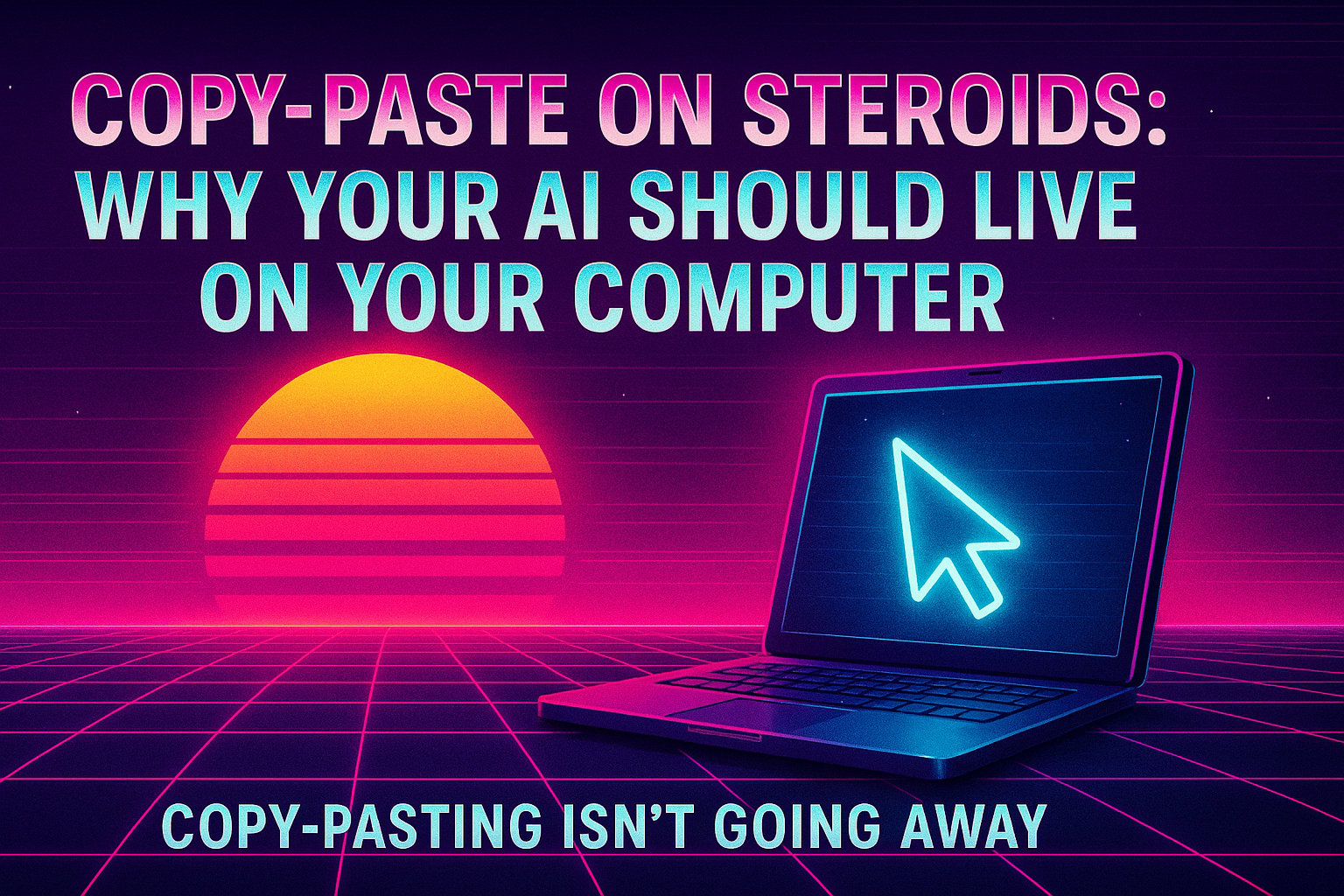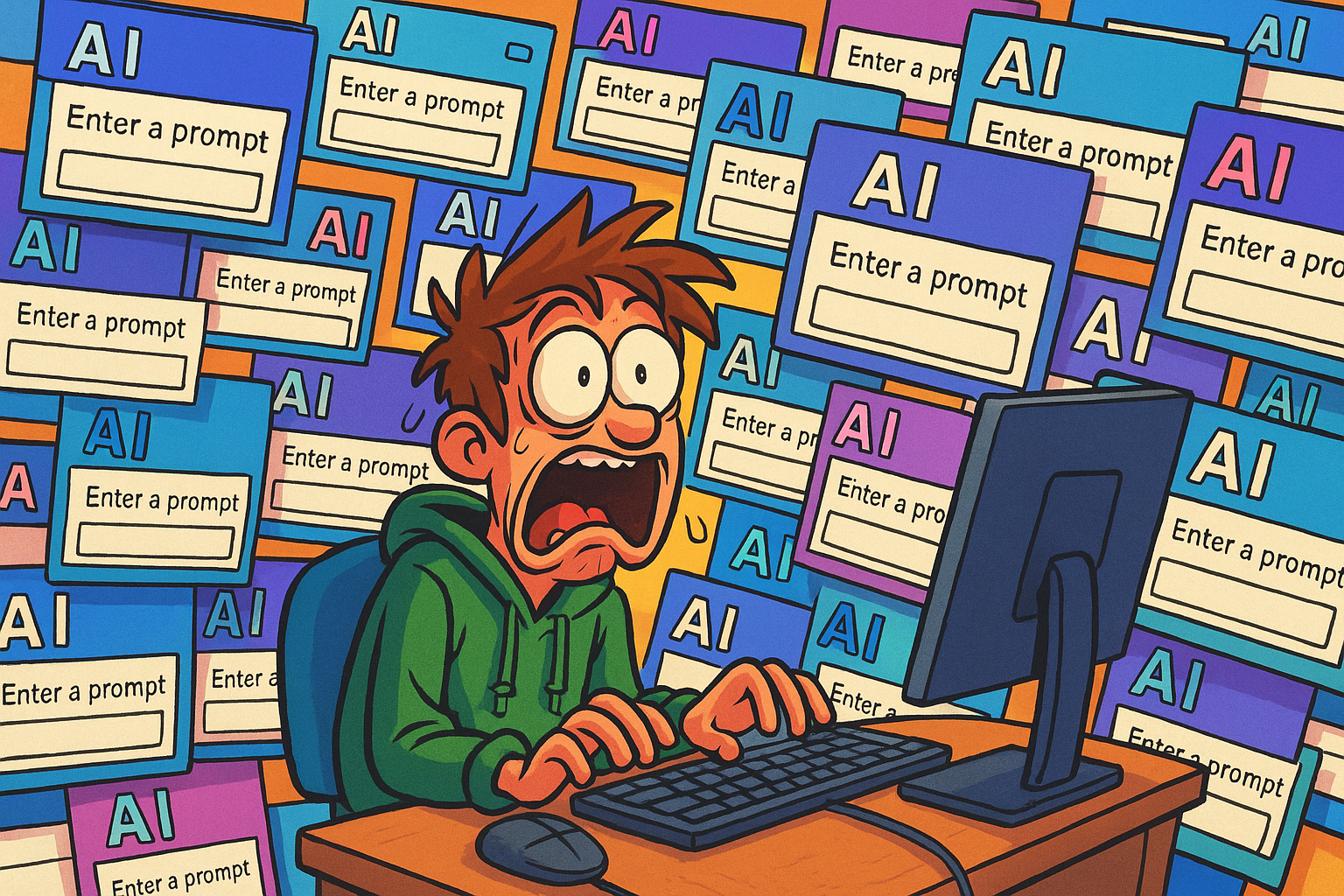Why Don’t You Just Use GPT or Claude?
Let’s get this straight from the start: if you’re asking whether local AI models can compete with ChatGPT, Claude, Gemini, or Grok right now, the answer is a resounding no. Not even close.
And honestly? That’s exactly what we should expect. Companies like OpenAI, Anthropic, Google, Meta, and xAI have built something genuinely remarkable. Local models like Llama, Gemma, Mistral, or the latest Qwen releases are impressive for what they are - genuinely useful tools that run on consumer hardware. But when it comes to reasoning, creativity, and handling complex tasks, frontier cloud models are still in a different league entirely.
Before you assume anything, I am actually a fan of these frontier model providers. They’re pushing the boundaries of what’s possible and delivering incredible value. The question isn’t whether they’re amazing (they are), but whether the current pricing and access model will remain sustainable as the technology matures.
Reality Check
As of 2025, I would argue the best local models (those run on decent consumer hardware) are roughly equivalent to GPT-3.5 level performance, maybe touching early GPT-4 on very specific tasks. The gap is real and significant.
So why am I even writing this? Because despite the performance gap, there are compelling scenarios where local AI isn’t just viable - it’s actually the better choice.
When Local AI Makes You An Offer You Can’t Refuse
🔒 The Sensitive Data Scenario
You’re a lawyer reviewing client contracts. A doctor analyzing patient notes. A startup founder with proprietary business plans. Your data is sensitive, regulated, or simply too valuable to send to OpenAI’s servers.
Sure, you could use GPT-4 to summarize that confidential merger document, but good luck explaining to your client why their sensitive information is now sitting in Microsoft’s Azure logs. Sometimes “just use ChatGPT” isn’t an option - it’s a career-ending liability.
# What you need:
# - Summarize confidential documents
# - Format sensitive data into bullet points
# - Basic text processing without data leakage
# - HIPAA/GDPR/SOX compliance
# What local AI gives you:
# - Zero data transmission
# - Complete audit trail
# - Regulatory compliance
# - Peace of mind💸 The Long-Haul Cost Reality
Here’s where the math gets interesting. You’re working on a massive document processing project - maybe analyzing thousands of PDFs, generating reports, or doing bulk content analysis.
Current frontier model pricing:
- GPT-4o: $2.5/1M input, $10/1M output tokens
- GPT-4.1: $2/1M input, $8/1M output tokens
- Claude Sonnet 4: $3/1M input, $15/1M output tokens
- Claude Opus 4: $15/1M input, $75/1M output tokens
- Grok 4: $3/1M input, $15/1M output tokens
For heavy computational workloads, these costs add up fast. We’re talking about projects that could cost you $10,000+ in API fees when a local model running on your hardware could handle 80% of the work for the electricity cost of running your gaming PC.
Cost Comparison: Bulk Document Processing
Cloud AI (Processing 10M tokens/day for a month)
- GPT-4o: ~$375/month in API costs (assuming 70% input, 30% output)
- GPT-4.1: ~$300/month in API costs (assuming 70% input, 30% output)
- Claude Sonnet 4: ~$540/month in API costs (assuming 70% input, 30% output)
- Claude Opus 4: ~$2,700/month in API costs (assuming 70% input, 30% output)
- Plus: Zero hardware investment
Local AI (Equivalent workload)
- Hardware: $3,000-5,000 one-time investment
- Electricity: ~$50/month
- Plus: You own the infrastructure forever
The Economics Are Naturally Evolving
Here’s what I see coming, and why this creates an opportunity for local AI - not because cloud providers are doing anything wrong, but because market dynamics are predictable:
📈 The Natural Price Evolution
Here’s the thing about frontier AI pricing. Rather than me trying to convince you with petty arguments, I’m just calling it now: we will head toward $2,000/month subscriptions for premium AI access. Maybe even higher.
And honestly? This makes perfect sense. These companies are investing billions in compute infrastructure, R&D, and talent to push the boundaries of what’s possible. The current pricing is still subsidized by venture funding and market-building strategies. As these technologies mature and the market stabilizes, prices will naturally reflect the true cost of delivering cutting-edge AI.
This isn’t a conspiracy - it’s just how breakthrough technologies typically evolve. Early adopters get great deals, then pricing normalizes to sustainable levels.
🔥 Hardware Is Getting Good
Meanwhile, on the hardware front, specific advances are delivering dramatic improvements:
- NVIDIA RTX 5090: 32GB GDDR7 memory
- Apple M4 Max: 128GB unified memory, runs quantized models locally
- AMD Ryzen AI MAX+ 395: 128GB unified memory, runs local AI models with shared CPU/GPU access
The convergence is real, but let’s be precise: NVIDIA’s DGX Spark ($3,000, formerly Project DIGITS) uses a GB10 Grace Blackwell Superchip with 128GB unified memory to run quantized models with over 200B parameters locally. Apple’s Mac Studios can also run quantized versions of large models.
The Convergence Point
Here’s where it gets interesting. As cloud AI prices inevitably rise and consumer hardware dramatically improves, we’re approaching a convergence point where local AI becomes economically compelling for more than just privacy-sensitive or high-volume use cases.
The Coming Shift
Within 2-3 years, I predict local AI will be good enough for 70-80% of common tasks while costing a fraction of cloud alternatives. The question isn’t whether this will happen - it’s how fast.
So comes in the CZero Engine
This is exactly why we’re not trying to be create another wrapper for or compete with ChatGPT or Claude directly. Instead, we’re building the infrastructure for when local AI becomes genuinely viable:
- Workspace framework that helps you to centrally manage your data in AI-native way (there’s more to come on this)
- Local LLM suite that is easy-to-use so that you can run LLM locally with few clicks (honestly, there are already other good players doing this so also check them out)
- Context Engine that enables you to generate and inject your AI usage context in a privacy-preserving way (i.e., you get to check what you are injecting)
We’re building the bridge between today’s cloud-dominated AI landscape and tomorrow’s hybrid local/cloud future.
The Honest Assessment
Right now (2025): Cloud AI wins on almost everything except privacy and specific cost scenarios.
In 2-3 years: Local AI can handle most routine tasks competently while cloud AI specializes in the truly complex stuff.
In 5 years: The gap will be narrow enough that most people won’t care about the difference for 90% of their work.
The real question: Do you want to own your AI infrastructure when that transition happens, or do you want to be locked into whatever pricing model the cloud providers decide?
Want to Prepare for the Transition?
We’re not claiming local AI is ready to replace everything today. But if you want to be positioned for when the economics shift - and they will shift - maybe give our approach a shot.
Try It Out
- Local RAG Today: Zero-effort document processing in your browser - app.czero.cc
- Desktop Overlay: Personal AI interface that works with everything - Preview coming soon
- Discord: Join others and share your thoughts - Join here
Closing Thoughts
Cloud AI providers are making you an offer that’s genuinely hard to refuse: incredible AI capabilities with zero setup, instant access, and someone else handling all the infrastructure complexity. And right now, for most use cases, you should absolutely take that deal.
But here’s the thing: in The Godfather, even the best deals eventually came with trade-offs. Today’s incredibly convenient and (relatively) affordable cloud AI is tomorrow’s mature market with mature pricing. Today’s “we’ll handle everything for you” is tomorrow’s “these are our terms, take them or leave them.”
The smart move isn’t to abandon cloud AI - it’s to build optionality. Use the best tools available today while preparing for a future where you have more choices.
Maybe it’s time to start building your own AI capabilities (hence the company is named “Fief”works) alongside the cloud ones.
Sometimes the best deals are the ones you don’t take.



